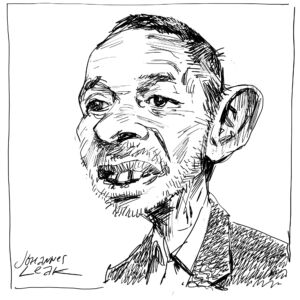Bob Dylan and the birth of The Sixties
On the 50th anniversary of the release of Dylan's first album, Frank Furedi looks back at that decade of tumult.

The man who advised us ‘Don’t follow leaders / Watch the parkin’ meters’ released his first album 50 years ago today.
That album, titled simply Bob Dylan, didn’t do particularly well in the charts, and at the time Dylan was regarded as just one of many up-and-coming folk-singers. A year later, however, with the release of his second album, The Freewheelin’ Bob Dylan, Dylan was transformed into an internationally acclaimed poet/songwriter. Somewhere between the release of those two albums, the phenomenon that we now call The Sixties was born.
At the time, and in the decades to come, the songs on The Freewheelin’… were seen as being typical of the genre of postwar protest music. And some were, of course. But they were also much more than that. Dylan’s most memorable track on The Freewheelin’… was ‘Blowin’ in the wind’, a song devoted to the issues of war and peace that is at once reassuring and ambivalent.
It tells us that ‘the answer, my friend, is blowin’ in the wind’. However, it is left to the listener, and to his imagination, to try to work out and capture Dylan’s elusive vision. Dylan’s songs of the early Sixties invite us to join him in a quest for some unspecified and intangible objective. It was a quest which captured the imagination of a generation of privileged but idealistic American and other Western youth.
Aside from his poetic intensity, what made Dylan’s music special was that his freewheeling and boundary-testing songs expressed a cultural mood that combined confrontation with the aspiration for freedom and a yearning for change and novelty. This was a moment in time when a public figure could, without embarrassment, celebrate freedom and really mean it.
So a month after the release of The Freewheelin’…, in June 1963, President John F Kennedy gave his ‘Ich bin ein Berliner’ speech. A couple of months later, in Washington DC, Martin Luther King Jr told one of the largest rallies for civil rights in American history that ‘I have a dream’. The fact that his desire for racial equality and harmony was presented as a ‘dream’ showed that those goals did not enjoy widespread cultural affirmation back then. But a start towards achieving support for such values was made by Dylan, singing alongside Joan Baez and other protest singers.
King made his speech was on 28 August 1963. Three months later, President Kennedy was assassinated. More than a few dreams and hopes were shattered on that day. But despite the anxieties and fears that enveloped post-Kennedy America, a momentous, albeit confusing, cultural shift was also taking place. The restless search for answers so beautifully communicated through Dylan’s songs unleashed the human imagination in new directions, and held out the promise of freedom and choice.
In the event, those who embarked on that journey did not take themselves or the values of freedom as seriously as one might have liked, and what we are left with today, 50 years on, are more questions than answers. Perhaps the answer is still blowin’ in the wind. But for all that, here is to the Sixties, and to Dylan. Happy Fiftieth, Bob Dylan!
Frank Furedi’s On Tolerance: A Defence of Moral Independence is published by Continuum. (Order this book from Amazon(UK).) Visit his personal website here.
To enquire about republishing spiked’s content, a right to reply or to request a correction, please contact the managing editor, Viv Regan.









Comments
Want to join the conversation?
Only spiked supporters and patrons, who donate regularly to us, can comment on our articles.